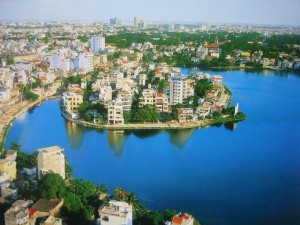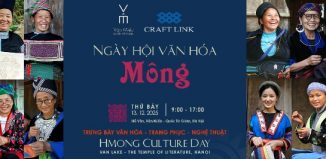Ngũ Xã Island – Part 1

Part 1: The Red River
The Red River is a live being – it moves; not just flows, and like the multi-bodied multi-headed Indian snake naga, each of the heads and bodies of the Red River is always looking for another, easier way to flow.
My friend asked me to write something about Ngũ Xã Island. But, so much has already been written about the island. What can I add to it? Where would I begin?
Long, long ago there was no Ngũ Xã Island, there was no White Oleander Lake, there was no West Lake – because the Red River flowed there. The Red River is a live being – it moves; not just flows, and like the multi-bodied multi-headed Indian snake naga, each of the heads and bodies of the Red River is always looking for another, easier way to flow.
There was a time when the main body of the Red River found a new way to flow, and moved itself northeast, and thus left behind itself a lake, a lake still connected to itself, like a mother who has just given birth. And, in this lake, the Red River also left behind an island. So was born the island we now call Ngũ Xã.
But, exactly as is the custom of the people of Vietnam, the people then did not call this young island by its current name. It was only toward the end of the 16th century that the island began to be called Ngũ Xã.
Why Ngũ Xã? Because the word ngũ is the word that means 5 in the olden Vietnamese, the Vietnamese that descended to Vietnam from China (the Han Viet language). And, why Five Village Island – there are not 5 small villages on the island, but rather one big one?! Because the families from 5 different small villages near and around Thăng Long went there to live and work.
Surely now you will ask what for did these families come to the island, right? Ah, for the answer to this question you will have to wait until the next time I write more!
![]()
| Written in both Vietnamese and English by me, with Vietnamese corrections by my teacher, Nguyễn Thái Tài. Sources: I need your help: If you know of any upcoming event for this column, please let me know. Hanoi Grapevine focuses mainly on contemporary art and culture in Vietnam, but we also post information about events that are part of Vietnam’s rich cultural heritage. |














Great. I love this natural writting :) and this interesting story. A new knowledge for young people i suppose ;)